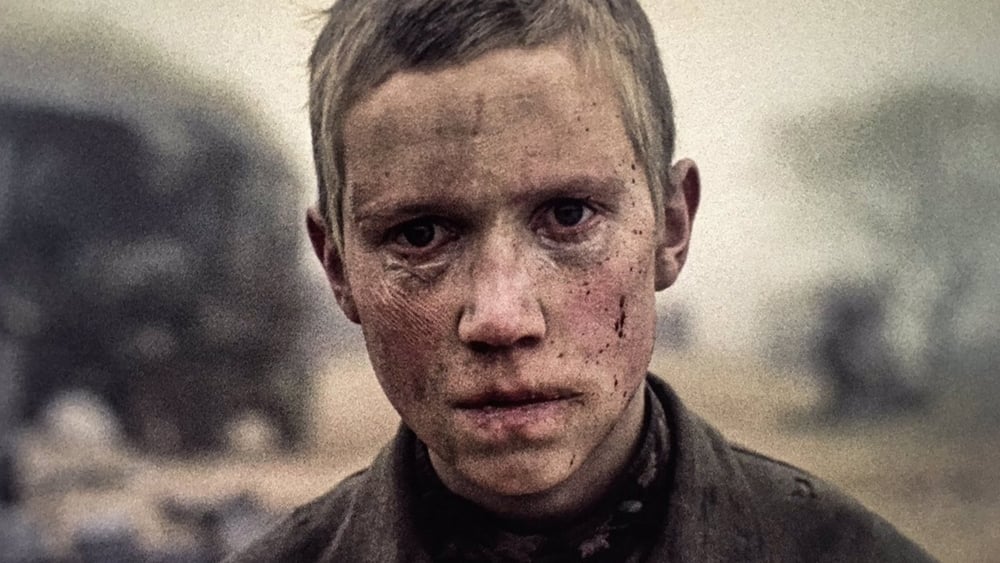If my memory serves me correctly, I first saw this film on the RYM ‘top films’ charts. I took interest in it being a Belarusian film – the only one of its kind on the chart – and the rather surreal cover it had.
The cover of a boy with seemingly aged eyes with a long-gone stare, a war-torn and haunted expression warped in a multi-coloured halo. I originally thought it was a sci-fi film judging by the cover, to which I was corrected seeing the genres of the film.
It was only the other day where I finally sat down and watched the film, months after torrenting it and promising to myself I’ll watch it one day, and I am still in shock and awe at the sheer masterpiece of film I watched.
The film follows a fictional account of Flyora (played by Aleksei Kravchenko), a 14-year-old teenage boy from a Belarusian village during the Nazi German occupation of Byelorussia, beginning with innocently joining the Belarusian partisans after recovering a gun from near the coast. From here begins our descent from youth, his mother demanding him to kill his family once she finds out the news – unbelieving at how his son is heading for war, knowing what’s coming.
We soon start to see bombs exploding through fields, near-death experiences and mental strain it places upn Floyra, swaying between hysterics and near-breakdowns.
Come and See pulls absolutely zero punches with its portrayal of the horrific war crimes the Nazis committed during the occupation. From the scorched earth tactics used in villages to gunning down innocent villagers, Come and See expertly shows the inhumanity of the soldiers who find pleasure in the screams and cries of its victims. We start to see bombs exploding through fields, near-death experiences
The mental trauma of surviving these incidents is not missed either. In fact, it plays centre stage by Kravchenko as we witness how an innocent boy is pulled into the catastrophes of war, and the complete look of terror he feels in seeing his countrymen being slaughtered by Nazis – a total loss of innocence played in real-time:
The hyperrealism makes the film as impactful as it is. The composition of the scenes where you are faced with the fear in Flyora’s eyes leaves a scar on the viewer, a reminder of the apocalyptic horror the victims faced throughout the war. A reminder of how humans are capable of such evils.
Further, the sense of surrealism and traumatic perspectives plays remnant to the psychological damage suffered at the hands of war. A coming-of-age massacred by war, Glasha’s scenes in the film shows us how these teenagers are trying to comprehend the bombings and killings they were witness to, then descending into madness at the denial of lines of dead friends and family sit across the houses of the villages. Even the play on sound throughout the film, playing on the damage on the ears caused by bombs sometimes plunges us into confusion.
Come and See is an unforgettable experience, leaving you paralyzed from the scale of suffering thrusted at the camera. Scenes that end with a catharsis of pain and insanity which beg for release but seem never-ending. A statistic of 628 Byelorussian villages scorched to the ground, abandoned and unrecoverable, lost to war.
Now considered a masterpiece and an essential anti-war film, I wholly suggest you watch this (in the right state of mind).

Leave a Reply